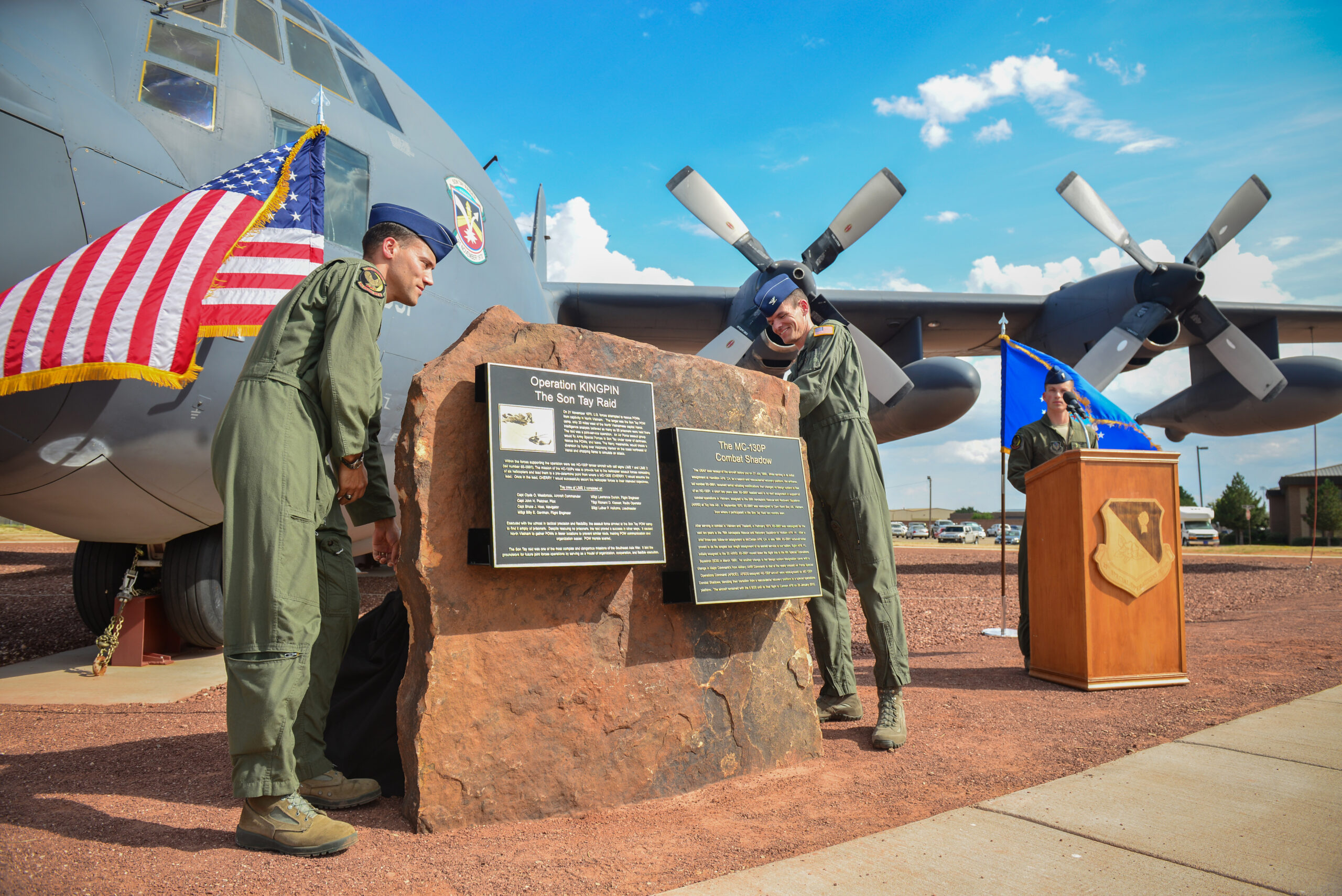History of the daring raid on Son Tay Prison

U.S. Air Force Lt. Col. Nathan Scopac, 9th Special Operations Squadron commander, and Col. Benjamin Maitre, 27th Special Operations Wing commander, reveal a plaque celebrating MC-130P Combat Shadow Lime 02 in a ceremony Sept. 3, 2015, at Cannon Air Force Base, N.M. The aircraft, long an asset of the 9th SOS, was dedicated in a ceremony remembering its role in the Son Tay Raid.
SUMMARY
The Son Tay prison raid was a bold and risky mission that took place during the Vietnam War. A team of highly-trained soldiers led the raid, a remarkable feat of courage and heroism. Let's explore the events leading up to the mission, the planning and execution and its aftermath.
Here is the history of the daring raid on Son Tay Prison
Background
Throughout the Vietnam War, several prison camps held American prisoners of war across the country. POWs experienced brutal living conditions, including torture and mistreatment by their North Vietnamese captors. The United States government was adamant about rescuing the prisoners and bringing them home.
The top priority was to rescue the American prisoners, even if it seemed impossible. Intelligence gathering operations were conducted, and various rescue plans were formulated. This led to the identification of Son Tay prison camp as the largest POW camp in North Vietnam. Intel revealed it held a significant number of American prisoners.
Released or escaped American prisoners quickly provided intel on the location, size and number of POWs present. Then, after careful consideration and planning, the government launched a high-risk rescue mission on Son Tay prison. It was named "Operation Ivory Coast," and Colonel Arthur D. "Bull" Simons, a seasoned veteran in conducting special operations missions, led the operation. The mission presented the best chance to free the American prisoners of war and bring them home.
Planning and Preparation
Colonel Simons, a highly decorated Special Forces veteran, led the Son Tay raid with precision and skill. He was born in 1918 in Arizona and joined the U.S. Army in 1940, quickly recognized for his exceptional leadership skills. He earned several awards for bravery and service in World War II and the Korean War.
Simons was a skilled and fearless soldier with a reputation for expertise in conducting special operations missions. His experience and leadership were crucial in the planning and execution of the Son Tay raid. He handpicked a team of 116 soldiers from the United States Army Special Forces and the United States Air Force. Then, he spent months training and preparing the team for the mission.
Under his leadership, the team conducted numerous reconnaissance missions to gather intelligence on the prison and its surroundings. They also simulated the raid in mock-ups of the prison to prepare for the operation.
On the day of the mission, Simons led the team into North Vietnam and coordinated the operation from the ground. Although the mission did not result in the release of any American prisoners of war, Simons' leadership and skill were instrumental in the success of the raid.
The Raid
The Son Tay prison raid was a high-stakes operation that necessitated precision, skill, and courage from the special forces soldiers who carried it out. Upon arriving at the prison compound, they quickly assessed the situation and launched a surprise attack on the guards. Then, the team soldiers moved swiftly and efficiently, utilizing their training and expertise to overpower the enemy and gain control of the compound.
With the guards neutralized, the soldiers moved to the main building, where they expected to find American prisoners of war. However, they soon discovered the prisoners were elsewhere. Despite the disappointment, they pressed on.
The team used explosives to demolish buildings and structures while searching for any clues or information that could aid their mission.
During their search, the unit discovered a group of South Vietnamese prisoners held at the prison. The soldiers quickly liberated the prisoners, providing hope and freedom after months or even years of captivity. This small but significant victory renewed the team's sense of purpose and determination.
Although the raid encountered some enemy resistance, the soldiers were prepared and equipped to handle any situation. Using their training and skills, they overcame the enemy and accomplished their mission.
Throughout the raid, the soldiers displayed remarkable bravery and determination. They risked their lives to complete their objective, and their actions were a testament to their commitment to their mission and their country. The Son Tay prison raid was a daring and audacious mission that showcased the bravery and skill of the United States special forces soldiers. Despite not achieving its primary objective, the raid was a success in many other ways, and it remains a testament to the courage and heroism of those who participated in it.
Son Tay Raid Aftermath
Although the Son Tay prison raid didn't result in the release of American prisoners of war, it's still considered a success. The mission showed the United States' commitment to its prisoners and its ability to conduct special operations in hostile territory. Furthermore, the raid had a psychological impact on the North Vietnamese, who realized that the United States was willing to take risks to rescue its prisoners.
The Son Tay prison raid was a daring and audacious mission showcasing the bravery and skill of United States special forces. Despite not achieving the primary objective, the raid succeeded in other ways. As a testament to the courage and heroism of those who participated, the mission's legacy lives on today.
SHARE
